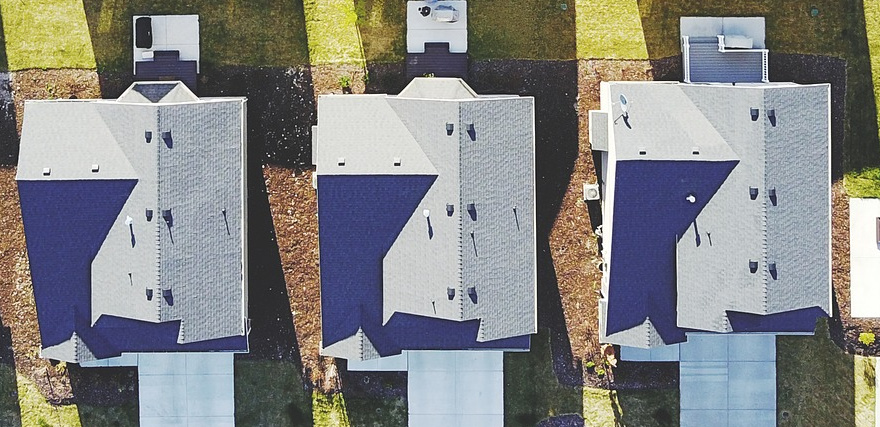There was a time in the US when suburbs were considered the realization of the American dream. In her book, “The End of the Suburbs,” Leigh Gallagher explores what suburbs mean to Americans now and looks ahead to how housing patterns are changing.
Gallagher provided an overview at the International City/County Management Association conference of the “seismic shift” her research has shown. The shift is the urbanization of our suburbs to something occupying the middle ground between isolated, homogeneous developments and crowded cities.
Factors making suburbs less desirable
Commuting is a part of the suburban experience that can eat away at quality of life. Figures from the US Census indicate that the number of workers reporting commutes of 60 minutes or longer increased to 9.8% in 2019, compared with 7.9% in 2006. There are 4.6 million people in the ranks of “super commuters,” spending 90 minutes or more one-way to get to work.
People who moved to suburbs to have access to better schools for their children are finding that they aren’t able to spend time with the children for whom they made the move.
In addition, homes in traditional suburbs are so spread out that people can’t interact with their neighbors. Isolation builds in neighborhoods designed to have extensive buffers around individual homes.
Gallagher’s research for her book showed growing negative sentiment about traditional suburban living. Some responses:
- “I slowly realized it was not the life I wanted to lead.”
- “We’re only here until the kids are done with school.”
- “I live in a sterile, superficial suburb after having lived in Chelsea [New York City] for 12 years—and dying slowly, one day at a time.”
Benefits of urbanizing
Developers are incorporating walkability and a more dense concentration of homes in urbanized developments, says Gallagher.
The pandemic has hastened some of these changes, as people felt empowered to move as their employers changed policies about in-office work.
There was a time in the US when suburbs were considered the realization of the American dream. In her book, “The End of the Suburbs,” Leigh Gallagher explores what suburbs mean to Americans now and looks ahead to how housing patterns are changing.
Gallagher provided an overview at the International City/County Management Association conference of the “seismic shift” her research has shown. The shift is the urbanization of our suburbs to something occupying the middle ground between isolated, homogeneous developments and crowded cities.
Factors making suburbs less desirable
Commuting is a part of suburban life that can eat away at quality of life. Figures from the US Census indicate that the number of workers reporting commutes of 60 minutes or longer increased to 9.8% in 2019, compared with 7.9% in 2006. There are 4.6 million people in the ranks of “super commuters,” spending 90 minutes or more one-way to get to work.
People who moved to suburbs to have access to better schools for their children are finding that they aren’t able to spend time with their kids.
In addition, homes in traditional suburbs are so spread out that people can’t interact with their neighbors. Isolation builds in neighborhoods designed to have extensive buffers around individual homes.
Gallagher’s research for her book showed growing negative sentiment about traditional suburban living. Some responses:
- “I slowly realized it was not the life I wanted to lead.”
- “We’re only here until the kids are done with school.”
- “I live in a sterile, superficial suburb after having lived in Chelsea [New York City] for 12 years—and dying slowly, one day at a time.”
Benefits of urbanizing
Developers are incorporating walkability and a denser concentration of homes in urbanized developments, says Gallagher.
The pandemic has hastened some of these changes, as people felt empowered to move as their employers changed policies about in-person office work.
People still want a hint of the urban amenities (a variety of dining options, walkability), but they don’t necessarily want the stresses of big city life, says Gallagher, who described various developers’ approaches to designing “urban burbs.”
Gallagher shared, as an example of how developers are responding, the story of home builder Toll Brothers. Toll Brothers is building fewer suburban megahomes than it used to. Suburban megahomes used to make up at least 70% of their portfolio, but that number has dropped to about 50% now.
Gallagher also listed these communities as demonstrations of the shift to a new urbanism:
- The Kentlands Community in Gaithersburg, Md.
- Bridge Park in the Bridge Street District of Dublin, Ohio
- The School Street Development in Libertyville, Ill.
The future of cities and corporate offices
Despite the changes in consumer preferences, it is far too early to give up on cities and corporate offices, notes Gallagher.
Her employer, Google, believes flexibility is “everything,” according to Gallagher, yet the company finds it important to facilitate the ability of people to come together.
Renowned urbanist Jane Jacobs said suburbs would go out of fashion, but Gallagher sees the future of suburbs with a different twist. We may have reached “peak burb” as the stereotypes in our heads portray them, but “one size fits all is being replaced by a range of options.”
The urbanization and other changes cropping up in cities and towns now are not an end, but rather a beginning, says Gallagher. They portend a “restarted American dream” that makes quality of life, health and happiness priorities.
These changes open the door for “multiple American dreams for multiple American dreamers,” says Gallagher.
If you liked this article, sign up for SmartBrief’s free email newsletter from the International City/County Management Association. It’s among SmartBrief’s more than 250 industry-focused newsletters.
Paula Kiger edits ICMA SmartBrief and other government and nonprofit sector newsletters. She also co-manages @SBLeaders on Twitter. You can find her at her blog Big Green Pen, on Instagram, at LinkedIn and as @biggreenpen on Twitter.
